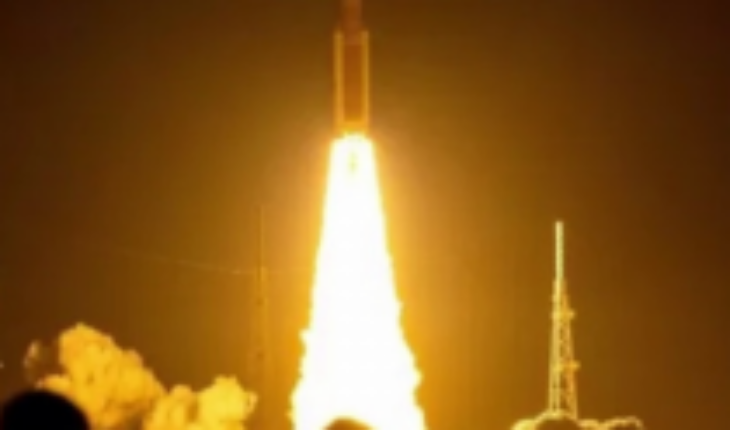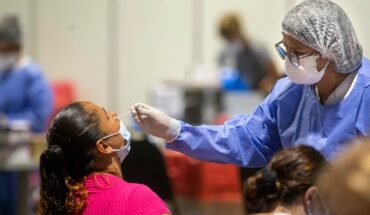Its mission is Push a test capsule, called OriOrn, far from Earth.
This spacecraft will circle the Moon in a large arc before returning home to land in the Pacific Ocean on Dec. 11.
Orion is uncrewed, but if all the hardware is working satisfactorily, Astronauts will come on board for a future series of increasingly complex missions, starting in 2024.
On this occasion, the commander’s seat in Artemis I is occupied by a “moonikin” (from the English “Luna” and “mannequin”) that bears the name of Arturo Campos, who was key to bringing Apollo 13 back to Earth safely.
Campos’ role is to test the same spacesuit that Artemis astronauts will wear during launch, entry, and other dynamic phases of their missions.
“Everything we’re doing with this Artemis I flight, we’re looking at through the lens of what we can test and what we can see that will reduce the risk to the manned Artemis II mission,” NASA astronaut Randy Bresnik explained.
Is Artemis the Apollo of a new generation?
In 1969, when Neil Armstrong and Buzz Aldrin took their first steps on the moon, they inaugurated a golden age of space exploration. The Apollo program transformed our view of the planet and ourselves.
Now, 50 years later, the Moon is once again in the crosshairs of humanity. And for those who were never able to witness the Apollo missions for themselves, the hope is that Artemis will inspire a new generation.
“The new missions will be different. NASA plans to land the first woman and person of color on the moon, demonstrating that space exploration is open to everyone. And the lunar surface is just the beginning. NASA’s ambition goes even further: its sights are set on Mars. And that will be a great leap to experiment,” says BBC science analyst Rebecca Morelle.
The SLS launched 39.1 meganewtons of thrust from the platform, which is about 15% more than the Saturn V rockets that sent Apollo astronauts to the Moon in the 60s and 70s.
In other words, the SLS’s engines could power the equivalent of nearly 60 Concorde supersonic aircraft on takeoff.
Spectacular launch
Tens of thousands of people flocked to the surrounding area to witness the launch.
“This rocket will be bigger, louder and more impressive than anything we’ve seen before,” said Lorna Kenna, vice president of the Jacobs Space Operations Group, one of Kennedy Space Center’s prime contractors.
“There’s nothing like feeling sound, not just hearing it, but feeling like it floods you,” he said.
The megarocket’s core will help propel the first Artemis mission to the moon.
In reality, the main challenge of the mission comes right at the end of it, when it returns to Earth.
The main concern of engineers is to see Yes the Ori heat shieldOrn will withstand extreme temperatures that you will find on re-entry into the Earth’s atmosphere.
Orion will enter very fast: at 38,000 km/h, that is, 32 times the speed of sound.
The SLS provides the power needed to send the Orion spacecraft to the Moon.
“Even the reinforced carbon that protected the shuttle could only withstand about 3,000 degrees Fahrenheit (1,648 degrees Celsius),” said Mike Hawes, Orion program manager at aerospace manufacturer Lockheed Martin.
“Now, we’re getting to over 4,000 degrees Fahrenheit (2,200 degrees Celsius). We have returned to the Apollo ablative material called Avcoat. It’s in blocks with a gap fill, and testing it is a big priority,” he added.
This flight is a great moment not only for NASA, but also for the European Space Agency.
ESA has provided the service module for Orion. This is the rear section that pushes the capsule through space. With this contribution, Europe hopes that it will be allowed to include its citizens in future trips to the surface of the Moon.
Missions to Artemis IX are currently being planned.
If all goes according to plan, in 2025, Artemis-3 will be the first moon landing since the Apollo 17 mission in 1972. The mission will also include the first female astronaut and the first black person to reach the moon.
Arrived At that point, astronauts should have habitats and roving vehicles on the Moon.
But ultimately, the Artemis mission is considered as one road of tests to take people to Mars.
“The timetable for that was set by U.S. President (Barack) Obama. He talked about 2033,” NASA Administrator Bill Nelson recalled.
“Every successive administration has supported the program and the realistic timetable that has been passed to me now speaks to the late 2030s, maybe 2040.”





